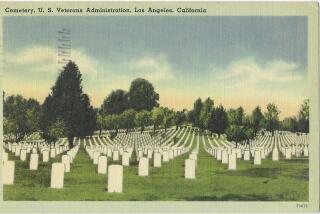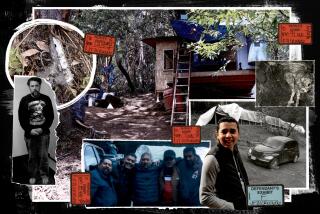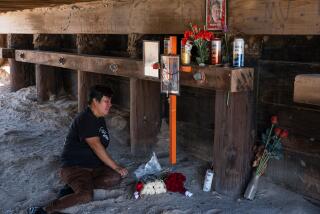Fatal Funeral : Rancher Recounts 1863 Killing Over Fear of Smallpox
We are all badly scared by the smallpox. We keep a sentinel posted to give notice of the approach of anyone and we have to know about them before they can come nearer to the corral.... Many have done the same thing. I have stopped my vaqueros in their rounds.... --Cave Johnson Couts, San Luis Rey, 1862 For much of the 19th Century, the scourge of smallpox frightened frontier communities in the United States. Despite the existence of effective vaccines, epidemics of the deadly disease often wreaked havoc, particularly among Mexicans and Native Americans. An outbreak of smallpox in 1862 killed hundreds in Southern California, many in northern San Diego County.
Cave J. Couts, a successful cattleman from Rancho Guajome at San Luis Rey, proved to be the best chronicler of the outbreak. At one point, Couts and his brother were central figures in a cemetery killing that was rooted in fear of the disease.
“Small pox is quite prevalent,” wrote Couts to a friend, “six to eight per day are being buried in S. Juan Capistrano--Indians generally.” Many victims were buried in the campo santo of Mission San Luis Rey, where, Couts observed, “a grave cannot be dug without striking human bones . . . they (Indians) were digging little holes, barely enough to cover their coffins . . . .”
The cemetery at Mission San Luis Rey would be the scene of a tragic incident on Jan. 13, 1863, when family and friends came to bury smallpox victim Don Ysidro Maria Alvarado, a well known cattleman from Rancho Monserrate, a few miles northeast of San Luis Rey.
As Cave Couts would report the next day: “In avoiding the loathsome disease now infesting our community, we have had to resort to arms, resulting in the killing of one man.”
The prominence of Alvarado had not swayed fellow rancher Cave Couts from deciding there would be no more burials of smallpox victims at the mission, a property he owned. Hearing that Alvarado was about to be buried, he dispatched his younger brother, William Blount Couts, to stop the burial. Blount, along with two servants, arrived at the cemetery in a carriage. Alvarado’s son, Tomas, remembered what followed:
“Being inside the graveyard, we lowered the coffin into the grave. We were throwing the first earth over the coffin, when Blount Couts arrived, suddenly, without our looking or thinking of him, and came close to the wall (of the graveyard), and said, ‘Como diputado del Sherif del condado, no es permitido que este Senor se entierra aqui. ‘ (As deputy of the sheriff of the county, you are not permitted to bury this man here.) At the time he said this, he had in his hands a gun of two barrels.”
One member of the burial party, Leon Vasquez, was outraged by the presence of Couts. With a shovel in his hand, the vaquero impulsively rushed toward Couts, who fired one barrel in Vasquez’s direction. As Vasquez jumped up on the wall of the camp santo, Couts fired his second barrel. Struck in the face, Vasquez slumped over the wall, dead.
The unarmed burial party scattered in fear. Couts’ servant, Miguel, fired more shots, wounding two men. “The whole affair was the act of a moment,” recalled Tomas, “the shots and death--all was muy pronto .”
In a letter to his attorney, Blount’s brother, Cave, defended the action by saying, “the fellow killed is really not worth noticing. . . . He (Vasquez) is known as a bad character.”
Three months later, a county justice of the peace indicted William Blount Couts on a charge of murder. Couts’ attorney, citing a variety of problems in the indictment paperwork, succeeded in having the charge dropped, despite depositions from eight eyewitnesses.
Meanwhile, the smallpox epidemic had run its course. By the spring of 1863, the disease, and the fear, had passed.
The court papers of “People v. William B. Couts” can be read at the Research Archives of the San Diego Historical Society in Balboa Park.
More to Read
Sign up for Essential California
The most important California stories and recommendations in your inbox every morning.
You may occasionally receive promotional content from the Los Angeles Times.










